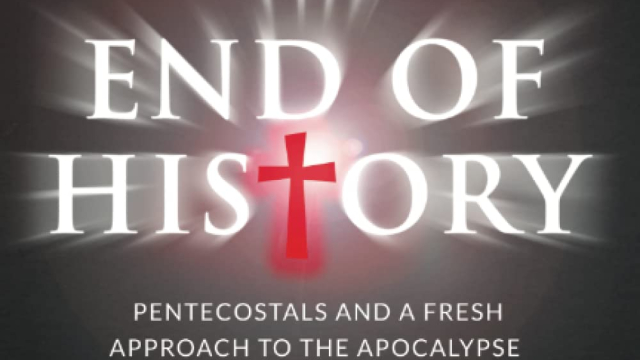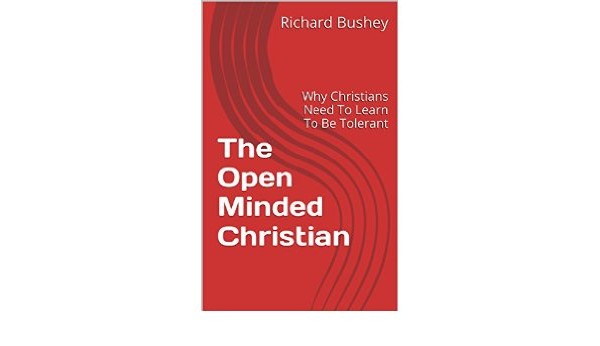Click to join the conversation with over 500,000 Pentecostal believers and scholars
Click to get our FREE MOBILE APP and stay connected
| PentecostalTheology.com



 Robert P. Menzies, The End of History: Pentecostals and a Fresh Approach to the Apocalypse (ACPT Press, 2022), 207 pages, ISBN 9780578361161.
Robert P. Menzies, The End of History: Pentecostals and a Fresh Approach to the Apocalypse (ACPT Press, 2022), 207 pages, ISBN 9780578361161.
In recent years, there have been several books from Pentecostal/Charismatic scholars challenging what has been the traditional—or default—pre-Tribulation, pre-millennial view of the end times within many P/C circles. Among these are Daniel Isgrigg’s Imagining the Future, and Not Afraid of the Antichrist by Michael Brown and Craig Keener [Editor’s note: See Brian Roden’s review]. Assemblies of God missionary scholar Robert P. Menzies adds to this discussion with his 2022 book, The End of History: Pentecostals and a Fresh Approach to the Apocalypse. While Brown and Keener mainly focus on the exegetical deficiencies of the pre-Trib position, and Isgrigg focuses on the historical development of A/G eschatology to show that the pre-Trib view should not be the only acceptable option for that denomination’s ministers, Menzies goes a step further and actively advocates for an amillennial stance.
The book is divided into two main parts and includes seven appendices containing various Pentecostal statements of faith as well as shorter excurses that did not warrant chapter-length treatment. Part One of the book consists of two chapters, the first of which addresses problems with dispensationalism, with the second dealing with issues regarding premillennialism in general. Part Two consists of four chapters, each one presenting two theological affirmations Menzies sees as important for the Pentecostal movement. The eight theological affirmations in Part Two are interspersed with expository sermons drawn from the book of Revelation that address each pair of affirmations. Much of the content of the sermons reflects Menzies’ experience working with persecuted believers in eastern Asia.
Since the higher criticism of the 19th century was allegorizing many parts of Scripture, including the resurrection, there was a push among many Christians to go with a literal interpretation of the text.
Chapter one, “Disputing Dispensationalism,” follows many of the same arguments Brown and Keener make concerning whether the return of Christ consists of two phases separated by seven years, or the Scriptures are simply discussing one single event using differing language and perspectives. One point that Menzies brings to the fore, that this reviewer has not seen in other discussions of Dispensationalism and Pentecostalism, is the socio-theological context that surrounded the birth of the Pentecostal movement in the early 1900s. The Azusa Street Revival, and the church movements birthed from it, came on the heels of the fundamentalist-modernist controversy. Since the higher criticism of the 19th century was allegorizing many parts of Scripture, including the resurrection, there was a push among many Christians to go with a literal interpretation of the text whenever possible (excepting obvious metaphorical language such as Jesus’ statements about being the bread that came down from heaven). Since Pentecostals were experiencing the miraculous gifts talked about in the Bible, they were firmly opposed to the modernist view that would undermine the truth of the biblical miracle accounts. Since Dispensationalism’s more literalistic hermeneutic also opposed the modernists’ use of allegorization, Pentecostals tended to adopt that system (with modifications to remove cessationist elements concerning the charismata), importing its eschatological framework in the process.
In this chapter, the author also touches on the issues of whether Revelation’s chronology is one of linear progression or recapitulation; literal versus typological fulfillment of Old Testament prophecies; continuity and discontinuity regarding Israel and the Church; and whether Revelation’s prophecies extend and add to other New Testament prophecies about the end times or reaffirms them in a new context.
Chapter Two, “Premillennial Problems,” raises issues the author encounters with premillennialist interpretation in general (including historical or classical premillennialism). First, Menzies points out the “thousand years” of the Millennium is only mentioned in one place: Revelation 20:1–7. No other New Testament writer, nor the other books attributed to John, make any reference to it. Menzies, who finds himself more in the amillennial camp, encounters difficulty in dogmatically affirming a literal one thousand year reign based solely on a seven-verse passage. For his second objection to the premillennialist view, the author again raises the question of chronology in the Apocalypse, opting for a recapitulation pattern rather than a linear recounting of events. Menzies next deals with the binding of Satan, the question of two resurrections, and whether the nature of Christ’s reign is physical and political or spiritual. But even after arguing strongly against general premillennialist interpretations, he concludes the chapter saying, “The hermeneutical approach and theological perspective of historic premillennialists are actually much closer to those of most amillenialists that to those advocated by dispensational premillennialists” (84).
Part Two of the book is titled “A Fresh Approach,” and gets into the more practical outworkings of Pentecostal eschatology. Menzies here proposes eight affirmations to which Pentecostals should hold, while avoiding disputable minutiae:
- We believe in the personal, visible, and bodily return of our Lord Jesus Christ.
- We believe that Christ’s return is imminent—that it could happen at any time.
- When Christ returns, he will judge all people: the righteous, his faithful followers, will enjoy eternal and perfect fellowship with him; the unrighteous will experience eternal separation from him and his wrath.
- God will consummate his redemptive plan in response to the prayers of his people.
- In these “last days” the church is called to bear bold witness for Jesus in the power of the Spirit.
- With his first coming, Jesus inaugurates God’s kingdom by decisively defeating the power of Satan, sin, and death. With his second coming, Jesus consummates God’s kingdom by destroying evil and redeeming his creation.
- The culmination of God’s redemptive plan includes the transformation of our world and the resurrection of our bodies.
- In these “last days” Christ calls his followers to pursue holiness by persevering and remaining faithful, even unto death.
The expositions of Revelation that accompany each pair of affirmations could easily be turned into sermons to be utilized in local churches. In regard to preaching and teaching the Apocalypse, Menzies writes, “We desperately need to highlight the central truths of the book of Revelation and other key New Testament texts that speak of Christ’s second coming, the ‘blessed hope.’ But we need to do so in a manner that avoids sensationalism and exaggeration and which is rooted in sober-minded and clear exposition of the biblical text” (p. 94).
The book concludes with seven appendices, three of which list the statements of faith of the Pentecostal World Fellowship, the World Assemblies of God Fellowship, and the U.S Assemblies of God, which provides a helpful comparison of the varying levels of specificity in the statements concerning the last things.
The fourth appendix compares and contrasts the eschatological stances of two major contributors to Assemblies of God theology: Menzies’ father, the late William W. Menzies, and the late Stanley M. Horton. The author points out that his father’s stance was premillennial but not dispensational, while it was Horton’s revision and expansion of the elder Menzies’ 1971 book Understanding Our Doctrine in the 1993 volume Bible Doctrines: A Pentecostal Perspective that greatly expanded the material on eschatology, going from one paragraph on the Rapture in William Menzies’ book to over three pages focused on a defense of the pre-Tribulation Rapture.
The fifth appendix gives a brief comparison of varying interpretations of “the kingdom of God,” while the sixth proposes two new categories for interpreting Revelation (the picture puzzle approach and the stained-glass window approach) the author feels work better than the traditional categories of preterist, historicist, idealist, and futurist. The seventh and final appendix restates in one location Menzies’ eight affirmations developed in chapters three through six.
Overall, I found the book an enjoyable read, even though I did not come away convinced by Menzies’ arguments for amillennialism. Perhaps it is my own leanings and bias in favor of historic premillennialism that keep me from understanding his line of reasoning, but I personally found the arguments unconvincing, though much better stated than I found Stanley Horton’s arguments for a pre-Tribulation view confusing in his book Our Destiny: Biblical Teachings on the Last Things, which I read for a class on eschatology many years ago.
The King is returning to judge, and He will reward the faithful and punish the evildoers. Knowing all the details of how that plays out is not as important as making sure as many people as possible are among the sheep that will receive rewards and the crown of eternal life.
While it can be important to debunk the idea of a two-stage return of Christ (the pre-Tribulation Rapture view) because of the false expectations to which it can lead people (including being unprepared for actual difficulties believers are told by Christ to expect), trying to determine whether historic premillennialism or amillennialism is the “correct” system may be a fool’s errand. As Dr. Michael Heiser once stated on a podcast episode discussing the use of the Old Testament in Revelation, “All eschatological systems cheat.” Each system as formally constructed encounters difficult passages that seem to require exegetical gymnastics to accommodate. We should be careful not to fall into so much theological navel-gazing trying to iron out every single wrinkle of eschatology that we lose focus on the mission of spreading the gospel.
The King is returning to judge, and He will reward the faithful and punish the evildoers. Knowing all the details of how that plays out is not as important as making sure as many people as possible are among the sheep that will receive rewards and the crown of eternal life. Therefore, we should not be quick to dismiss (or seek to disfellowship) someone who holds an end times view different from our own, but rather work together with all believers of good will who are seeking to carry the gospel message to the ends of the earth.
Reviewed by Brian Roden
Note from the Editor: On November 26, 2022, (after Brian Roden submitted this review) Robert Menzies wrote to friends and colleagues: “On November 16 Bob received news from the U.S. Assemblies of God Executive Presbyters (EPs) that they had determined he should be dismissed as an Assemblies of God (AG) minister in response to eschatological views expressed in his recent book, The End of History: Pentecostals and a Fresh Approach to the Apocalypse. This concluded a process that began some months ago.” If you would like more information about the on-going missionary work of Bob and Joanne Menzies in China, please Contact Us.
For a sample from The End of History: https://play.google.com/books/reader?id=Xr1dEAAAQBAJ




Most Talked About Today